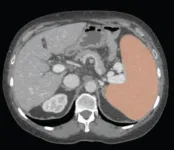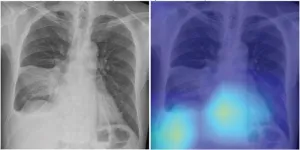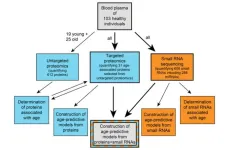(Press-News.org) WASHINGTON, D.C. — The U.S. Department of Energy (DOE) today released a plan to ensure the Department’s Federally funded research is more open and accessible to the public, researchers, and journalists as part of a broader effort by the Biden-Harris Administration to make government data more transparent. With 17 National Laboratories and scores of programs that fund university and private research, DOE directly supports thousands of research papers per year, and, when this plan goes into effect, those findings will be available immediately and at no cost.
“Science and innovation cannot flourish in the dark—they require openness, scrutiny, and reexamination so that we can build on them to create the knowledge and technologies that will change the world,” said U.S. Secretary of Energy Jennifer M. Granholm. “As one of the Federal Government’s leading sponsors of research, DOE is proud and excited to get our data and research out into the public’s hands faster and more efficiently, and we look forward to expanding and accelerating that access by engaging the American public in DOE’s mission.”
DOE’s public access plan supports the August 2022 White House Office of Science and Technology Policy (OSTP) memo that called for Federal agencies to “make publications and their supporting data resulting from federally funded research publicly accessible without an embargo on their free and public release.” The new plan describes the steps DOE will take to enable equitable access to the unclassified and unrestricted results of its multi-billion dollar annual investments in climate, energy, environment, and basic and applied research and development.
Since 2014, when DOE released its first plan to grant the public more access to research, the Department has provided free public access to nearly 200,000 articles and accepted manuscripts and has enabled broader access to scientific data through rigorous data management planning requirements.
Key elements of the new DOE public access plan, as laid out by OSTP, will include elimination of any “embargo” period before the public gains free access to journal articles or final accepted manuscripts resulting from federal funding; immediate access to scientific data displayed in or underlying publications and expanded access to scientific data not displayed in publications; and broad adoption of persistent identifiers (PIDs) for research outputs, organizations, awards and contracts, and people.
Most requirements and guidance will be in place by the end of 2024 with implementation by the end of 2025. DOE’s model for implementing access to publications and scientific data will be similar to existing practices—for publications, through submissions of accepted manuscripts or open access articles which will be made available through DOE’s public access repository, and for data, through submission of data management and sharing plans to DOE.
Key changes include the requirement to submit accepted manuscripts or open access journal articles immediately upon publication and an increased focus on immediate and broader sharing of scientific data.
DOE has played a leading role in the assignment and use of PIDs among Federal research agencies, and the new plan builds on this record and expands DOE’s support of PIDs for research outputs, such as data and software, research and sponsoring organizations, and for researchers themselves. DOE will work internally, and with other agencies, to develop options for PIDs for research and development awards and contracts and will update its public access plan when those details are finalized.
The Department engaged with numerous communities in developing its plan and will continue to encourage participation and input from researcher communities, libraries, professional societies, publishers, Federal agency partners, and the public.
END
US Department of Energy releases plan to ensure free, immediate, and equitable access to federally funded research
New guidance builds on 2014 plan that has provided public access to nearly 200,000 articles and manuscripts from DOE funding
2023-06-30
ELSE PRESS RELEASES FROM THIS DATE:
AI with volumetric thresholds facilitate opportunistic screening for splenomegaly
2023-06-30
Leesburg, VA, June 30, 2023—According to an accepted manuscript published in ARRS’ own American Journal of Roentgenology (AJR), using an automated deep-learning AI tool, as well as weight-based volumetric thresholds, might afford large-scale evaluation for splenomegaly on CT examinations performed for any indication.
Noting that, historically, the standard linear splenic measurements used as a surrogate for splenic volume yielded suboptimal performance in detecting volume-based splenomegaly, “the ...
Deep-learning chest radiograph model predicts mortality for community-acquired pneumonia
2023-06-30
Leesburg, VA, June 30, 2023—According to an accepted manuscript published in ARRS’ own American Journal of Roentgenology (AJR), a deep learning-based model using initial chest radiographs predicted 30-day mortality in patients with community-acquired pneumonia (CAP), improving upon the performance of an established risk prediction tool (i.e., CURB-65 score).
“The deep learning (DL) model may guide clinical decision-making in the management of patients with CAP by identifying high-risk patients who warrant hospitalization and intensive treatment,” concluded first author Eui Jin Hwang, MD, PhD, from the department of radiology at Seoul National ...
Astrophysicists propose a new way of measuring cosmic expansion: lensed gravitational waves
2023-06-30
(Santa Barbara, Calif.) — The universe is expanding; we’ve had evidence of that for about a century. But just how quickly celestial objects are receding from each other is still up for debate.
It’s no small feat to measure the rate at which objects move away from each other across vast distances. Since the discovery of cosmic expansion, its rate has been measured and re-measured with increasing precision, with some of the latest values ranging from 67.4 up to 76.5 kilometers per second per megaparsec, which relates the recession velocity (in ...
Age prediction from human blood plasma using proteomic and small RNA data: A comparative analysis
2023-06-30
“[...] we see our work as an indication that combining different molecular data types could be a general strategy to improve future aging clocks.”
BUFFALO, NY- June 30, 2023 – A new research paper was published on the cover of Aging (listed by MEDLINE/PubMed as "Aging (Albany NY)" and "Aging-US" by Web of Science) Volume 15, Issue 12, entitled, “Age prediction from human blood plasma using proteomic and small RNA data: a comparative analysis.”
Aging clocks, built from comprehensive molecular data, have emerged as promising tools ...
New A.I. system can decode fruit fly behaviors. Why that’s ‘pivotal’ for future human genetics research
2023-06-30
How can you tell if a fruit fly is hungry? Ask a computer.
While that may sound like a bad dad joke, it’s reality at Tulane University, where researchers have developed a new A.I. tool that can tell you if a fruit fly is hungry, sleepy or singing (yes, fruit flies sing).
Dubbed MAFDA (for Novel Machine-learning-based Automatic Fly-behavioral Detection and Annotation) the system uses cameras and a newly developed software to track and identify complex interactive behaviors of individual flies within a larger group. This allows researchers to compare and contrast the behaviors of fruit flies with different genetic backgrounds.
For more than a century, ...
Breast cancer by age: Study reveals early mutations that predict patient outcomes
2023-06-30
LA JOLLA, CALIF. – June 30, 2023 – A study led by researchers at Sanford Burnham Prebys has found that in young women, certain genetic mutations are associated with treatment-resistant breast cancer. These mutations are not linked to treatment-resistant breast cancer in older women. The findings, published in the journal Science Advances, could help improve precision medicine and suggest a brand-new way of classifying breast cancer.
“It’s well established that as you get older, you’re more likely to develop cancer. But we’re finding that this may not be true for all cancers depending on a person’s genetic makeup,” ...
Displays controlled by flexible fins and liquid droplets more versatile, efficient than LED screens
2023-06-30
CHAMPAIGN, Ill. — Flexible displays that can change color, convey information and even send veiled messages via infrared radiation are now possible, thanks to new research from the University of Illinois Urbana-Champaign. Engineers inspired by the morphing skins of animals like chameleons and octopuses have developed capillary-controlled robotic flapping fins to create switchable optical and infrared light multipixel displays that are 1,000 times more energy efficient than light-emitting devices.
The new study led by mechanical science and engineering professor Sameh Tawfick demonstrates ...
CU Anschutz researchers identify unique cell receptor, potential for new therapies
2023-06-30
AURORA, Colo. (June 30, 2023) – Researchers from the University of Colorado Anschutz Medical Campus have identified a potential new immune checkpoint receptor that could lead to treatments for diseases such as lung and bowel cancer and autoimmune conditions including IBD.
The study, published today in Science Immunology, examines a family of 13 receptors, or proteins that transmit signals for cells to follow, called killer cell immunoglobulin-like receptors (KIR). Of the 13 receptors, one is unique in that it has not readily been observed on immune cells of ...
A new bacterial blueprint to aid in the war on antibiotic resistance
2023-06-30
A team of scientists from around the globe, including those from Trinity College Dublin, has gained high-res structural insights into a key bacterial enzyme, which may help chemists design new drugs to inhibit it and thus suppress disease-causing bacteria. Their work is important as fears continue to grow around rising rates of antibiotic resistance.
The scientists, led by Martin Caffrey, Fellow Emeritus in Trinity’s School of Medicine and School of Biochemistry and Immunology, used next-gen X-ray crystallography and single particle cryo-electron microscopy ...
Climate disasters, traumatic events have long-term impacts on youths' academics
2023-06-30
UNIVERSITY PARK, Pa. — Experiencing traumatic events such as natural disasters may have long-term consequences for the academic progress and future food security of youth — a problem researchers said could worsen with the increased frequency of extreme weather events due to climate change.
In a study using data from Peru, researchers from Penn State’s College of Agricultural Sciences found that being exposed to a greater number of traumatic events or “shocks,” such as a natural disaster or loss of family income, in early ...
LAST 30 PRESS RELEASES:
Sleeping in on weekends may help boost teens’ mental health
Study: Teens use cellphones for an hour a day at school
After more than two years of war, Palestinian children are hungry, denied education and “like the living dead”
The untold story of life with Prader-Willi syndrome - according to the siblings who live it
How the parasite that ‘gave up sex’ found more hosts – and why its victory won’t last
When is it time to jump? The boiling frog problem of AI use in physics education
Twitter data reveals partisan divide in understanding why pollen season's getting worse
AI is quick but risky for updating old software
Revolutionizing biosecurity: new multi-omics framework to transform invasive species management
From ancient herb to modern medicine: new review unveils the multi-targeted healing potential of Borago officinalis
Building a global scientific community: Biological Diversity Journal announces dual recruitment of Editorial Board and Youth Editorial Board members
Microbes that break down antibiotics help protect ecosystems under drug pollution
Smart biochar that remembers pollutants offers a new way to clean water and recycle biomass
Rice genes matter more than domestication in shaping plant microbiomes
Ticking time bomb: Some farmers report as many as 70 tick encounters over a 6-month period
Turning garden and crop waste into plastics
Scientists discover ‘platypus galaxies’ in the early universe
Seeing thyroid cancer in a new light: when AI meets label-free imaging in the operating room
Neutrophil-to-lymphocyte ratio may aid risk stratification in depressive disorder
2026 Seismological Society of America Annual Meeting
AI-powered ECG analysis offers promising path for early detection of chronic obstructive pulmonary disease, says Mount Sinai researchers
GIMM uncovers flaws in lab-grown heart cells and paves the way for improved treatments
Cracking the evolutionary code of sleep
Medications could help the aging brain cope with surgery, memory impairment
Back pain linked to worse sleep years later in men over 65, according to study
CDC urges ‘shared decision-making’ on some childhood vaccines; many unclear about what that means
New research finds that an ‘equal treatment’ approach to economic opportunity advertising can backfire
Researchers create shape-shifting, self-navigating microparticles
Science army mobilizes to map US soil microbiome
Researchers develop new tools to turn grain crops into biosensors
[Press-News.org] US Department of Energy releases plan to ensure free, immediate, and equitable access to federally funded researchNew guidance builds on 2014 plan that has provided public access to nearly 200,000 articles and manuscripts from DOE funding





